Lifestyle
How to Grow Your Inbound Travel Business Through Digital Marketing.

Table of content
If you are a travel agency or an inbound tour operating company, one of the biggest challenges you face is getting qualified leads to generate more business. Travel & tours industries are a few of the most competitive in the world.
In this blog, we will look at what are the methods/channels widely used by industry to generate business & how online channels can boost your sales. Further, we will look at a step by step approach on how to generate leads online & successfully convert them to business.
In general, there are few methods employed by the travel industry to find customers. Below are widely known and used options.
- Establishing partnerships through travel companies abroad.
- Participating in annual & special travel exhibitions.
- Developing a website for the company to build the brand & generate leads.
- Doing search engine optimization (SEO) to increase organic traffic & lead generation.
- Doing paid online marketing, also known as PPC campaigns, to generate leads. This can be both Google and social media.
First & second options are costly as well as requires considerable time to generate business. To establish a potential partnership with a travel company, you need to build trust & reputation in the industry. You need to attend annual travel exhibitions to build connections & trust among potential partner companies from the target markets you specialize in delivering service.
It also takes a long time as you have to build partnerships with trust and credibility. It does not mean other options allows you to create a business with less to no trust & credibility. We will discuss this broadly later in the blog.
As you are well aware, travelling to exhibitions can be very expensive. However, this is one of the most successful methods to generate business. By actively considering the 3, 4 & 5 options, you increase the return of these travel exhibitions as it strengthens your brand.
Option 3: Developing a website for the company to build the brand & generate leads.
As you are very well aware, all your potential customers are now online. Almost of all the people who travel will use Google or Bing to research on the destination, to plan the vacation, to book hotels, etc. If you are thinking about providing your service to these potential customers, a website is a must.
If you are reading this, of course, you do have a website and a good social presence. But the question is, how good are your website and the social presence?
Here are a few tips on how your inbound travel website should be structured to generate the best business outcome.
1. Mobile-first design & development
The user experience on mobile should be excellent & the website should load within 3 seconds. You will lose over 50% of your mobile users if the website is not up to the required mobile-first standards. Further, Google will rank your website better if it is designed & developed for mobile-first customers. This will be the new norm as Google has switched to mobile-first indexing of websites.
2. Key website elements
Following are the most essential elements needed in your inbound tour website.
- A summary of 9 - 12 tour packages on the homepage with PP rates, tour type & duration. These packages can be grouped under 3 - 4 categories.
- Three to four customer testimonials
- Necessary call to actions across the website.
- Clear itinerary descriptions with the summary & essential details.

Option4: Doing search engine optimization (SEO) to increase organic traffic & lead generation
The travel industry is one of the most competitive sectors to do search engine optimization (SEO). We recommend that you optimize the SERP (search engine results page) ranking for the .com domain if you are targeting the global market. This process will take more than eight months to bring results, and you need to be patient. The focus should be on on-page, off-page & proper content strategy to get good results.
Further, you should develop the website to be SEO friendly and with initial on-page SEO optimizations. All the necessary pages should contain meta titles of 60 maximum character length & meta descriptions with 155 maximum character length. You need to optimize the URLs to follow the proper site structure & should re-write where necessary. These are the most basic required optimizations in addition to keyword density checks, anchor text optimizations, custom 404-page set up, schema marking up to URL canonicalization.
The primary activity in off-page SEO is link building. A proper strategy should be followed to build the required backlinks to your website. Necessary online article submissions, press releases and local directory submissions should be carried out. You can also have a proper blogger outreach program which is also known as guest blogging to get more authority links built to your website, which will increase the SERP rankings.
You need to write blogs with topics such as travel tips, what to do & not to do when travelling, etc. while trying to generate content that will make you an industry leader to the content. You need to develop your content with a proper strategy to get better SERP ranking. We will write more on how to develop topic cluster-based content to give you best results in SEO. Stay tuned!
Option 5: Doing paid online marketing, also known as PPC campaigns, to generate leads. This can be both Google and social media.
Paid marketing is one of the most critical areas you need to focus on to generate leads for your inbound travel business. But you should also keep in mind that you need to have your website developed to the standards required with the necessary content.
You might have the question of whether you need to do SEO first before paid marketing. Well, you don't need to. However, if you have the basic on-page SEO covered, it is a good indication that you have given enough attention to the content. It will help you provide relevant information to your customers who come to your website through paid marketing.
It may also beg you the question if SEO is not part of paid marketing. Well, it is part of paid marketing; however, for the ease of explaining, you can think of this as Pay Per Click (PPC) marketing.
We specialize in paid marketing campaigns for inbound travel companies. The travel customer journey in the global travel industry is reshaping because of micro-moments.
Micro-moments are the short spans of moments when consumers turn to their mobile to find answers by searching. These moments are significant as it shows the intent of the consumer at that particular moment.
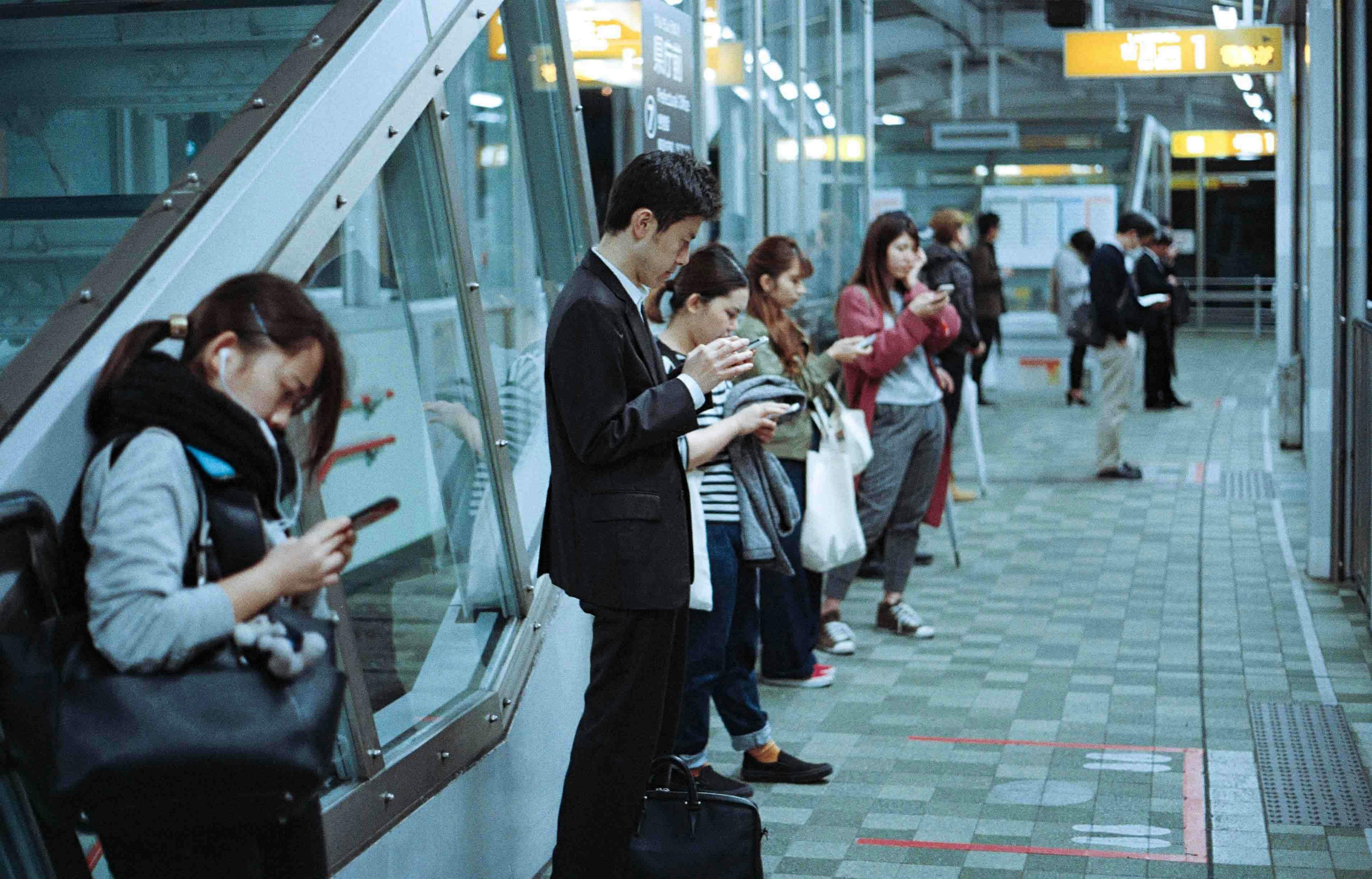
You must be wondering why it is crucial to your company, right? It is crucial because you can respond to these moments and provide relevant information to the consumers by bringing them to the website through a paid ad or SEO optimized content.
Unlike traditional marketing where companies decided what message to push at what time this is very effective since you are providing highly relevant information to the consumer at the right micro-moment.
We as a company help you listen to customer intents & respond to them in the right micro-moments through tested and proven concepts to maximize results.
With all of the above said, let's dig a bit deeper into the topic with 'how do you make your PPC campaigns effective?'. For us, it boils down to three things
- Focusing on the right markets
- Proper digital marketing campaign strategy and media plan
- Digital campaign execution and optimization
We'll cover a bit by discussing the first point which is focussing on the right markets. This begins with a proper analysis which is known as the digital export analysis.
What is Digital Export Analysis?
In simple words a digital export analysis gives you enough information to evaluate what is the right market to start advertising your products/services through digital marketing.
A digital export analysis is presented as a set of bubble graphs compiled using several information related to the following;
- Avg. search demand on Google in each country related to your particular industry
- Economic data of each country i.e GDP, GDP purchasing power parity, GDP per capita or household net disposable income.
- Year on Year (YoY) percentage increment of avg. search demand on Google in each country related to your particular industry.
- Cost of advertising which is based on Google's avg. recommended bid.
We will write more about how a digital export analysis is compiled and also how to read the bubble graphs generated to take meaningful insights.
Following images gives a sneak peek to an export analysis done by us for the inbound travel industry in Sri Lanka. In this particular case, we have considered the tourist arrival data from different countries as well.
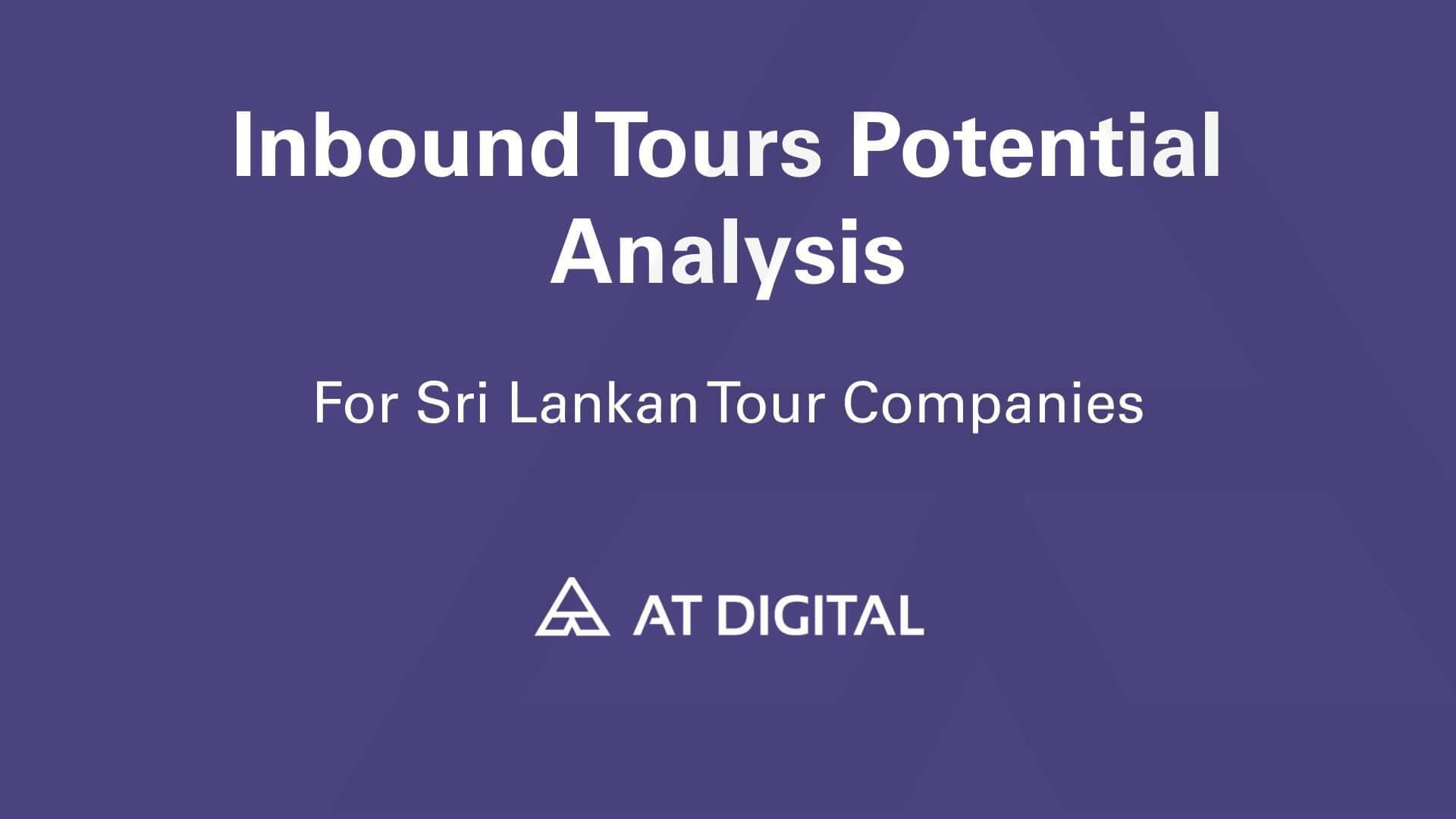
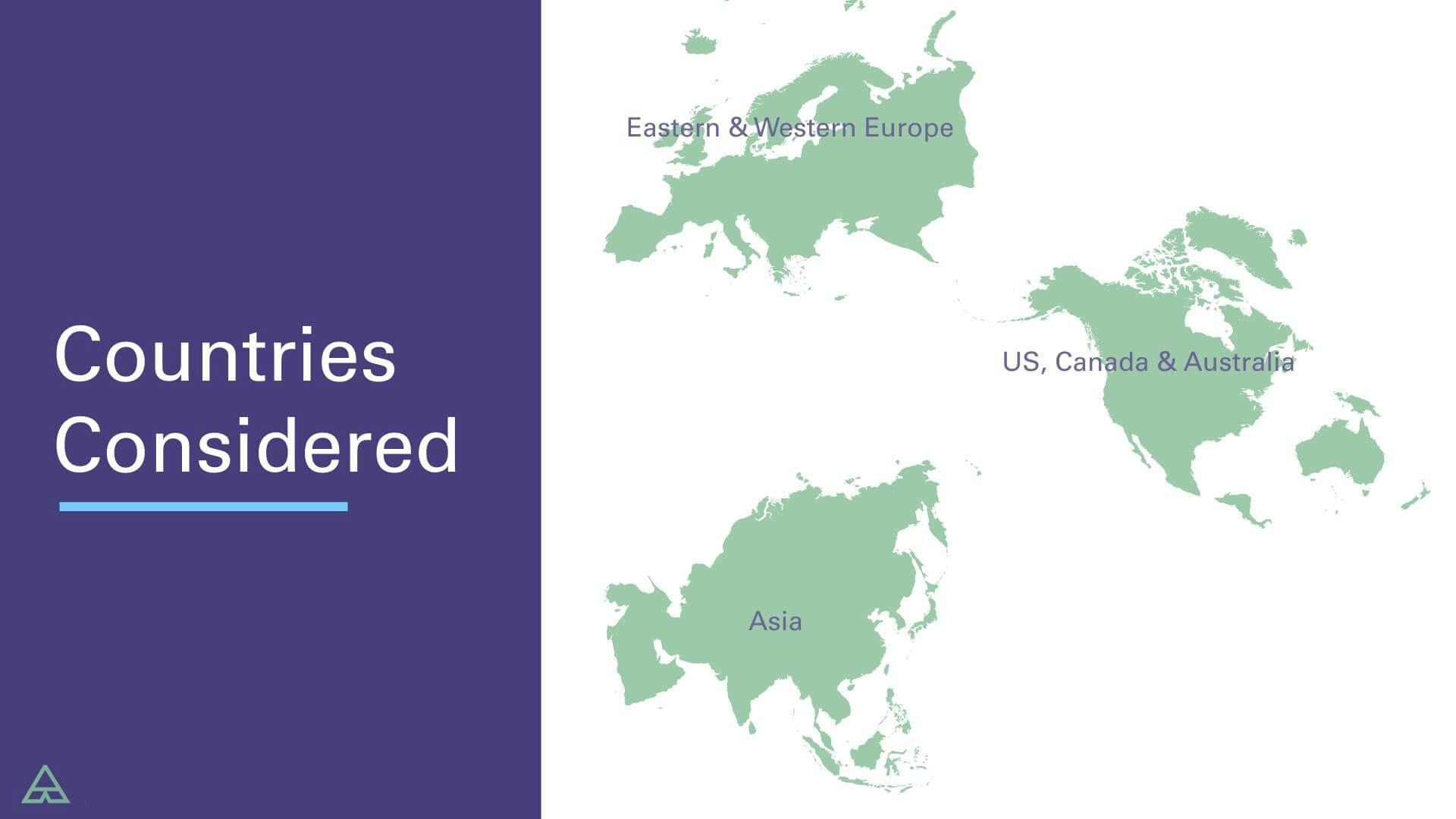
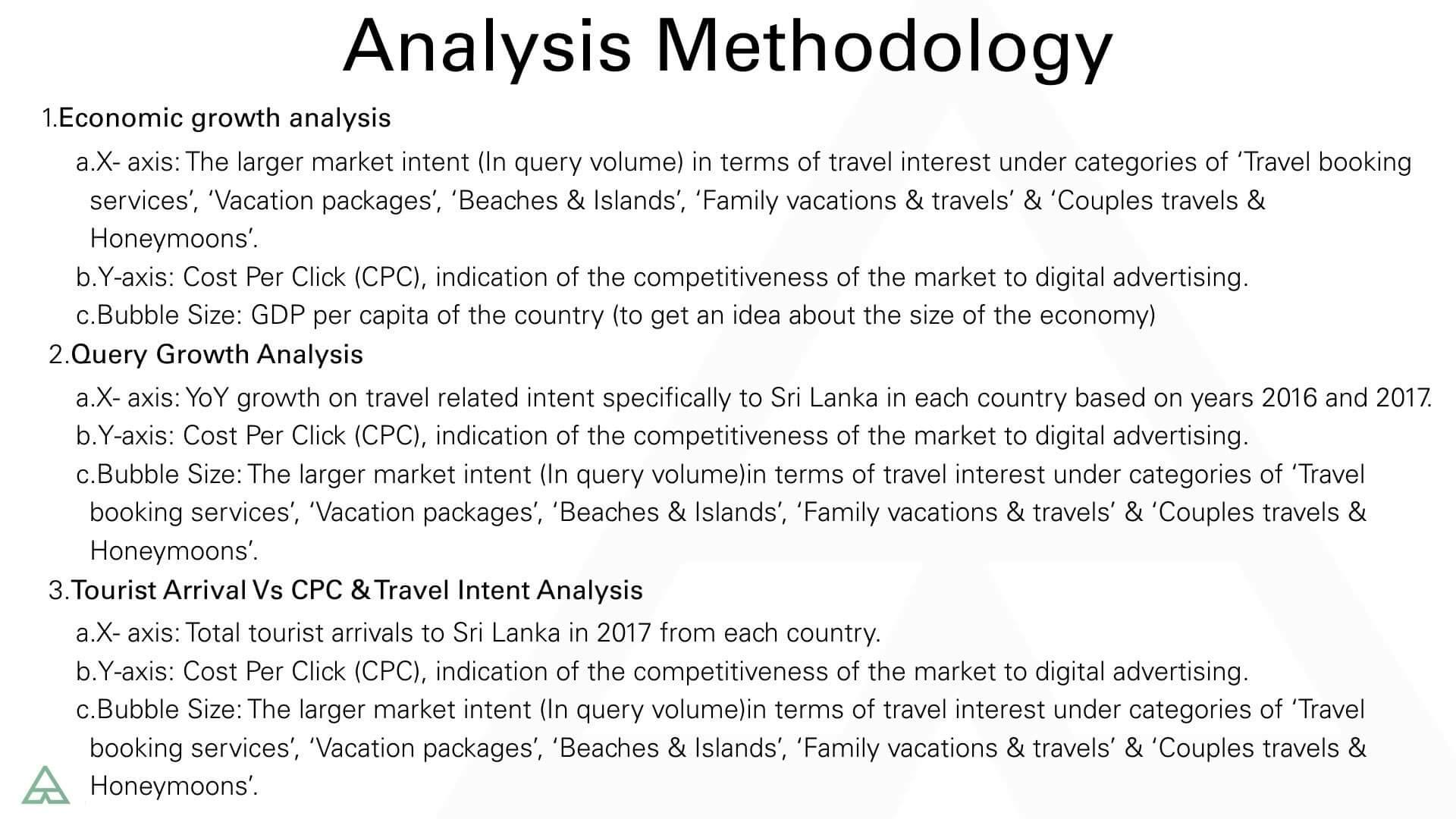
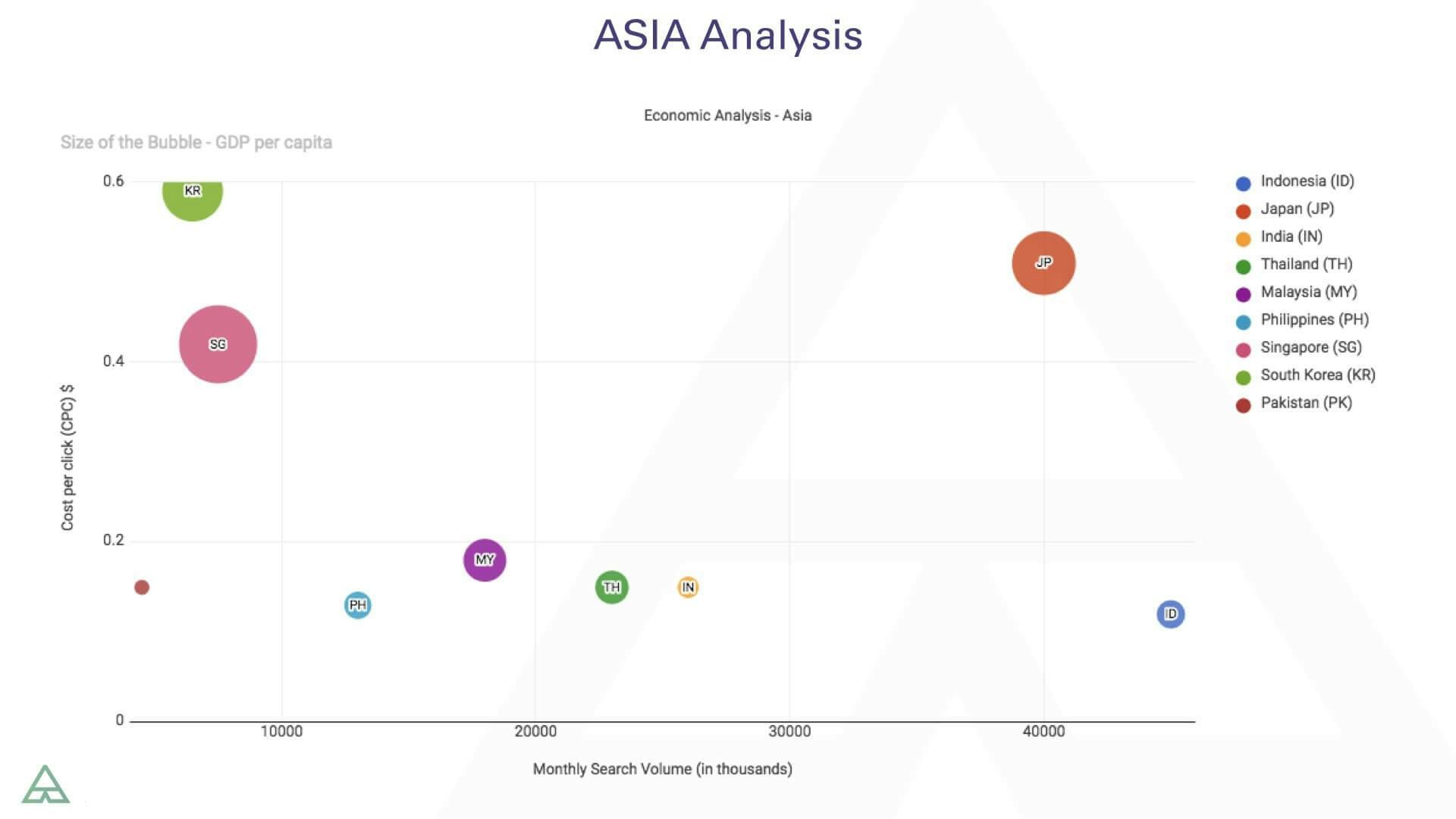

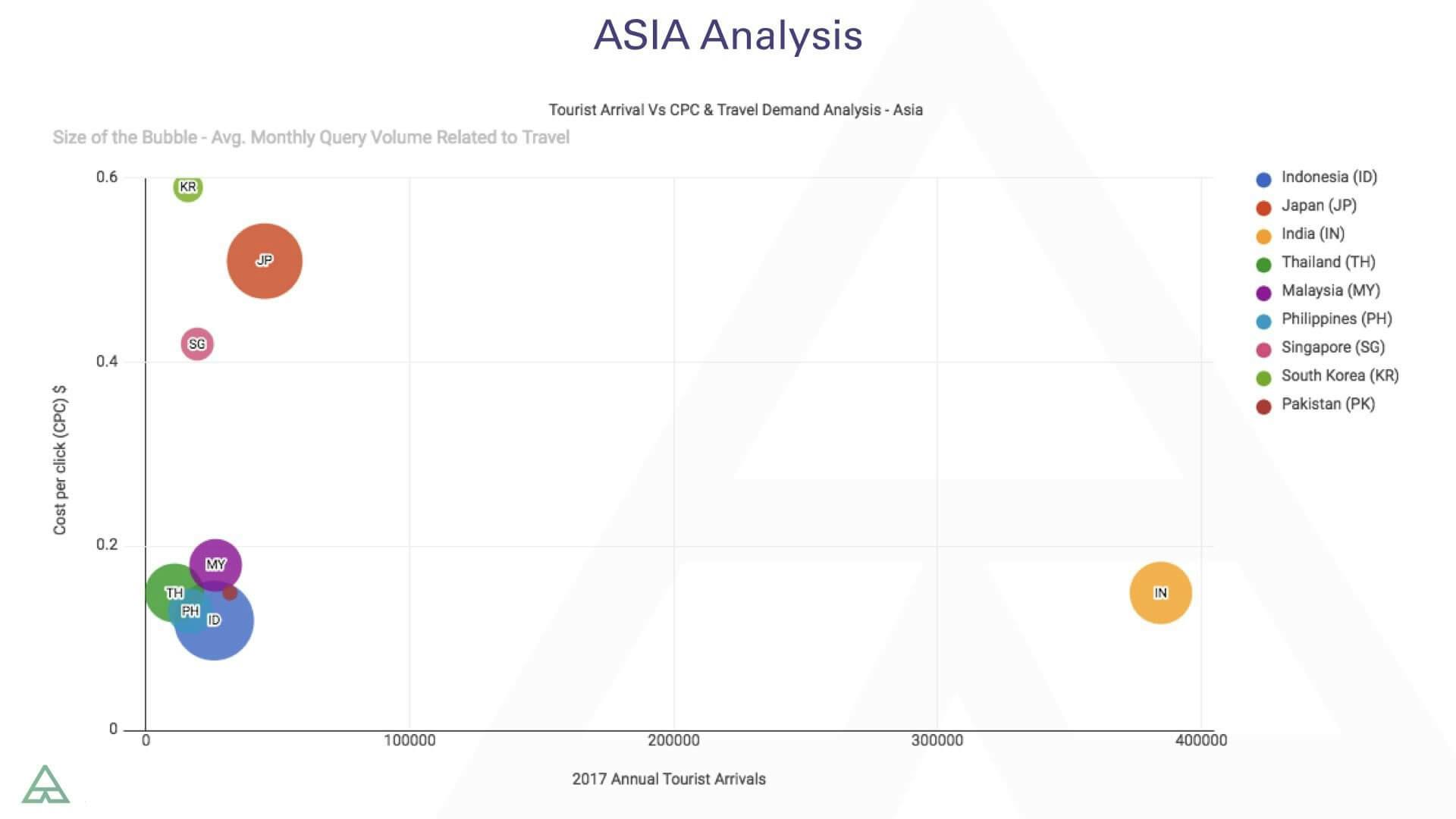

See How My Agency Can Drive More Traffic to Your Website
As a Digital Marketing Specialist, you will be responsible for developing and executing high-impact digital marketing campaigns.
Schedule Call
Orlando Diggs
